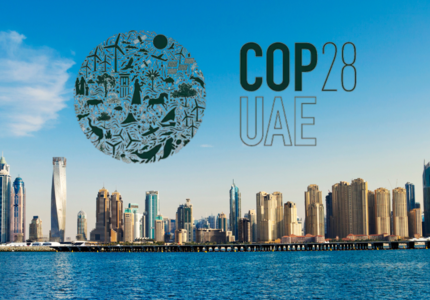The UN Secretary General Antonio Guterres is convening on September 20 a Climate Ambition Summit in the margins of the UN General Assembly in New York. In a key year for taking stock of climate action, this event aims to set global benchmarks to inform commitments and spur implementation from countries, companies and international financial institutions.
In continuation of his predecessor Ban Ki Moon, who had convened a UN Climate Summit in 2014 to support the establishment of what would become the Paris Agreement a year later, Antonio Guterres has been playing a key role in international climate diplomacy. While the 2019 Climate Action Summit was simply calling for all countries, businesses and cities to update and enhance their commitments ahead of the 2020 deadline set by the Paris Agreement’s five-year cycles of ambition and applauding the wave of net-zero commitments, the 2023 Climate Ambition Summit goes one step further. It cements Guterres’ role as an outspoken critic of greenwashing, and a partisan of greater transparency, accountability and environmental integrity, building on the report launched at COP27 aptly titled Integrity Matters.
What can be expected?
The summit aims to set a high bar for what ambition ought to look like by allowing on the podium only those who can demonstrably showcase they are first-doers and best-in-class. It is structured along three streams: ambition, credibility and implementation.
“Ambition” means calling governments to both enhance their existing nationally determined contributions (NDCs) and to pledge that their next NDCs, expected by 2025, will set ambitious targets to 2035 that will bring the world on a path to 1.5°C. The current ambition gap is clear: having a 50% chance of meeting 1.5°C with no or limited overshoot requires to reduce 2019 emissions by 42% by 2030, and by 60% by 2035, according to the IPCC AR6 Synthesis Report. Current commitments only reduce them by 0,3% on 2019 levels by 2030, according to the latest NDC Synthesis Report. Beyond the headline targets, governments are also encouraged to present ambitious plans for energy transition and adaptation, to confirm the Petersberg Dialogue announcement that the USD100 billion goal set in 2009 will indeed by met in 2023, and encourage further pledges towards the Green Climate Fund’s second round of replenishment (currently stuck at a halfway point).
“Credibility” is a direct nudge to businesses, cities, regions and financial institutions to commit to actual emission cuts and vastly reduce their reliance on carbon offsetting mechanisms, as called by last year’s report commissioned by the UNSG, and consider the impact their products and activities have on climate. They are also being recruited to lend support to a clear call to phase out fossil fuels, which is gearing up to be the main topic of COP28.
“Cooperation” is a call to all public and private stakeholders to strengthen existing partnerships and coalitions to deliver actual implementation on the ground, especially for high-emitting sectors with highly-traded commodities (steel, cement, agriculture) or international coordination mechanisms (energy, aviation, shipping). The newly released “Breakthrough Agenda Report 2023” by the International Energy Agency (IEA), the International Renewable Energy Agency (IRENA) and the United Nations Climate Change High-Level Champions precisely gives recommendations to countries on how to advance sectoral cooperation to reduce emissions faster. But this stream also refers to issues of climate justice, including the need to deliver on the Loss and Damage fund promised at COP27, and ramp up action on adaptation.
Why does it matter?
In addition to setting a high bar for ambition, the UNSG’s personal implication will also give much needed political momentum on key issues. First, on loss and damage, by convening a ministerial roundtable shortly after the Summit itself, and by prompting leaders from international financial institutions to present how they are are going to respond to L&D, in line with COP27’s Decision 2/CMA.4 (para 11). This should elevate politically the technical work done under the Transitional Committee to establish the fund and agree on new sources of funding. Regarding new potential sources, specifically, this provides the opportunity to discuss existing options (including new fiscal instruments) and build on the calls made to explore new international taxes both from the Summit for a Global Financial Pact, and the African Climate Summit in Nairobi.
Second, by convening a second ministerial roundtable on the political outcome from the Global Stocktake, a regular rendez-vous designed in the Paris Agreement to look back at the state of climate action in all areas and to inform future action (including the 2025 round of NDCs). This will be a first moment to reflect on the crisp messages coming out of the synthesis report of the technical phase of the Global Stocktake, including the need to phase out unabated fossil fuels, and the aspirational goal of tripling renewable energy capacity globally endorsed in the G20 Leaders’ declaration.






